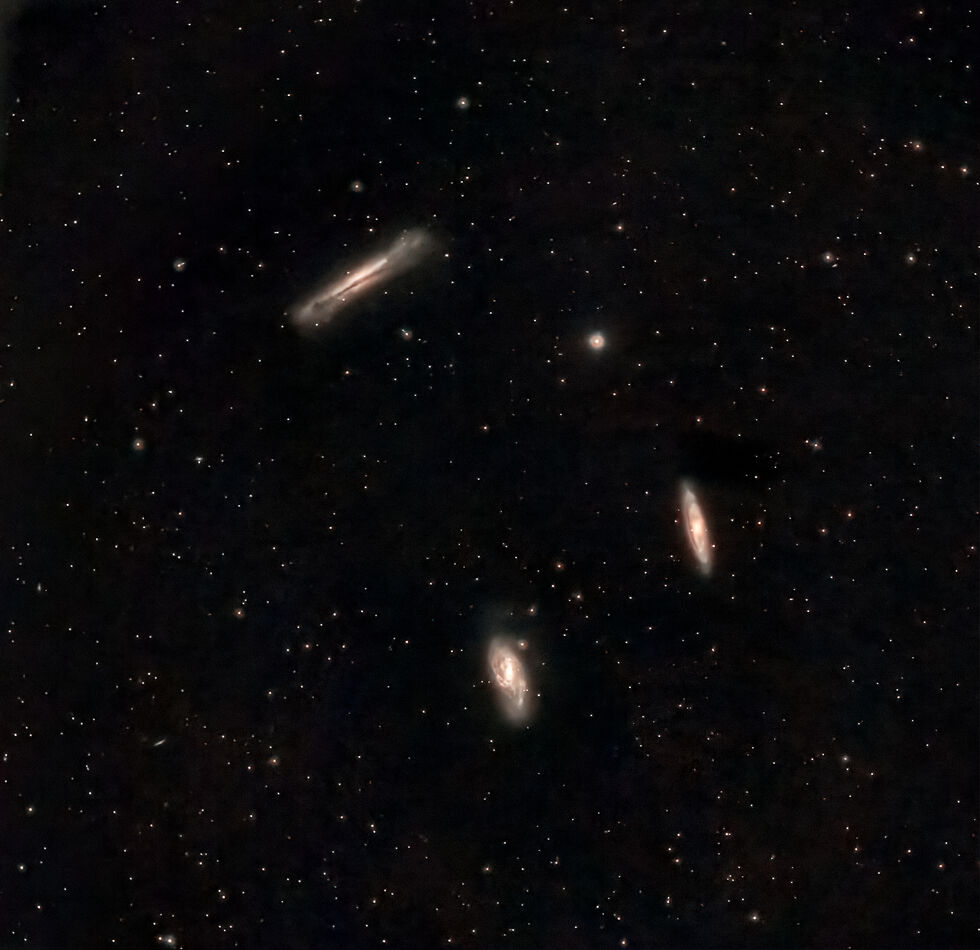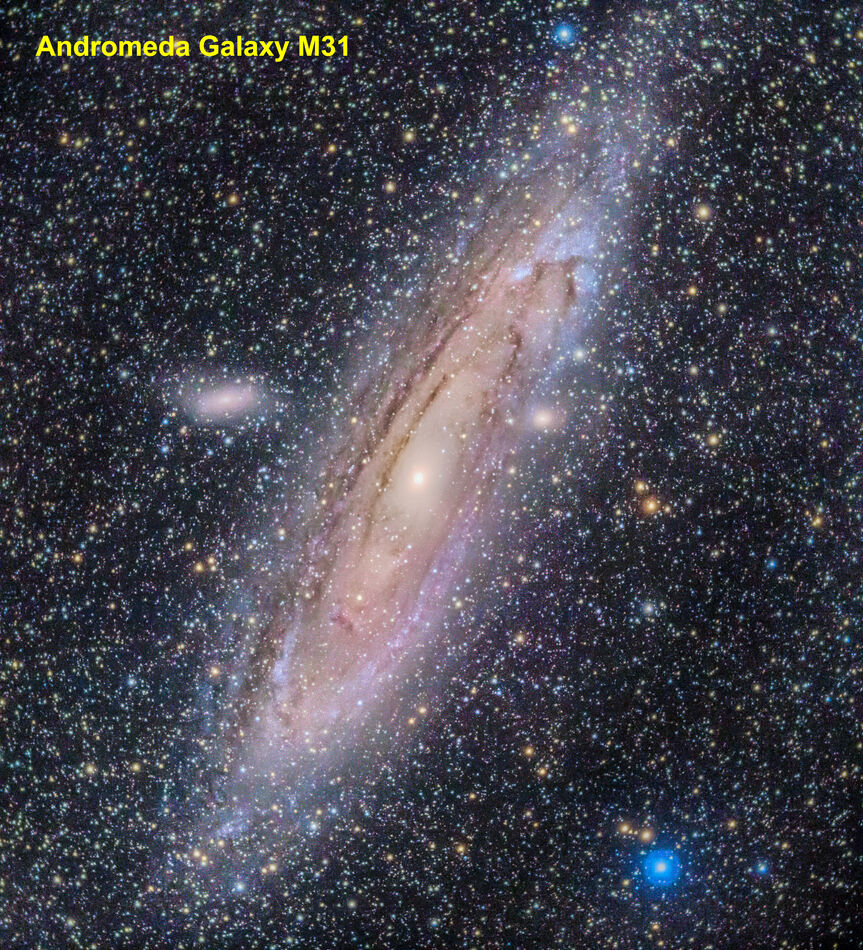Leo Triplet
Mar 18, 2024 11:47:01 #
Captured with a Sony A7R V camera and Astro-Tech 65EDQ scope with a Lumicon Deep Sky filter on a Celestron Evolution mount; 112x30 sec. subs @ ISO3200.
Alignment, stacking and initial stretch done in PixInsight. The remainder of the postprocessing was done in Lightroom and Photoshop (A-P).
If you look closely at this image you'll see at least two, probably three, additional small galaxies.
Enjoy!
bwa
Alignment, stacking and initial stretch done in PixInsight. The remainder of the postprocessing was done in Lightroom and Photoshop (A-P).
If you look closely at this image you'll see at least two, probably three, additional small galaxies.
Enjoy!
bwa
Mar 18, 2024 12:01:54 #
Wow! Great shot. So, is the top left galaxy a spiral as well, just seen side-on?
Mar 18, 2024 12:27:30 #
Retired CPO wrote:
Wow! Great shot. So, is the top left galaxy a spiral as well, just seen side-on?
The wordy description:
NGC 3628, also known as the Hamburger Galaxy or Sarah’s Galaxy, is an unbarred spiral galaxy located approximately 35 million light-years away in the constellation Leo. It was discovered by William Herschel in 1784. This intriguing galaxy possesses an approximately 300,000 light-years long tidal tail.
Notable features of NGC 3628 include:
- Type: SAb pec (unbarred spiral with peculiar features)
- Apparent Magnitude (V): 9.5
- Apparent Size (V): Approximately 14’ × 3.6’
- Leo Triplet: NGC 3628, along with M65 and M66, forms a small group of galaxies known as the Leo Triplet
- Dust Band: The most conspicuous feature of NGC 3628 is the broad and obscuring band of dust along the outer edge of its spiral arms, effectively transecting the galaxy from our view on Earth
- X-Shaped Bulge: Simulations suggest that NGC 3628 may actually be a barred spiral galaxy with the bar seen end-on due to the presence of an x-shaped bulge visible in multiple wavelengths
- Names: The whimsical name “Hamburger Galaxy” refers to its shape resembling a hamburger, while “Sarah’s Galaxy” is thought to honor poet Sarah Williams, known for the poem “The Old Astronomer”
bwa
Mar 18, 2024 13:42:13 #
bwana wrote:
The wordy description: br i NGC 3628, also known ... (show quote)
Thank you for the info! Endlessly fascinating work!
So, if I'm understanding this correctly, if one was to be parked alongside this galaxy in a really fast car with light speed capability. At one end or the other. It would take 300,000 years (three hundred thousand years!) to get to the other end at top speed. Of ONE galaxy!
If that's right, it's pretty obvious that any serious exploring of the Universe will require FTL (faster than light) speed! WARP SPEED, engage!!


Actually, I don't think "speed" is a term that can be used to describe that kind of motion!
Mar 18, 2024 16:24:52 #
Retired CPO wrote:
Thank you for the info! Endlessly fascinating work... (show quote)
But first it would take you 35 million years to get to the galaxy before you could start your test...
 then it would take another 300,000 years to travel from one end to the other. You could start with the Milky Way, it is only 100,000-120,000 light-years wide. A much shorter trip would be Earth to Sun; 8 light minutes.
then it would take another 300,000 years to travel from one end to the other. You could start with the Milky Way, it is only 100,000-120,000 light-years wide. A much shorter trip would be Earth to Sun; 8 light minutes.This kind of mental exercise may explain why we haven't seen any aliens in the neighborhood, i.e.: they haven't developed FTL travel either!
However, I believe I've found civilizations in the Andromeda galaxy, a mere 2.5 million light-years away. All those blue areas, about 3/4's of the way out from the core, show light pollution!


bwa
Mar 18, 2024 16:28:55 #
If you want to reply, then register here. Registration is free and your account is created instantly, so you can post right away.





